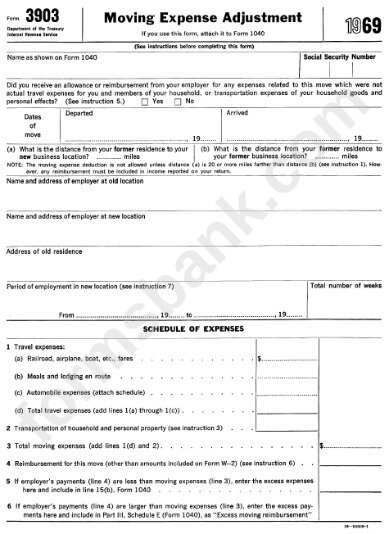Contents:


In order to avoid unwanted multitasking during production, so-called Work in Process limits have been introduced. For example, in automotive companies such a limit may be the number of cars that enter the production line. If realistically only two cars can leave it, there is no point in letting 10 units onto it.

WIP is considered a current asset in the company’s balance sheet and represents the total value of all materials, labor, and overhead of the unfinished products. As the name implies, WIP inventory accounting involves keeping track of the costs of unfinished goods as they move through the production process. At any given time, a portion of the inventory in a manufacturing operation is in the process of being transformed from raw materials or components into finished goods.
Learn more with
The limitations of having a Work-in-Process inventory include increased holding costs, the potential for obsolescence or spoilage, and increased risk of production delays or bottlenecks. Accurate accounting is also important for financial reporting, and WIP is a crucial part of the balance sheet. Accurate WIP accounting provides a clear picture of a company’s financial health and sends the right message to investors, lenders, and stakeholders.
Fomo Worldwide : Investor Update Hour aka “FOMO HOUR” – Form 8-K – Marketscreener.com
Fomo Worldwide : Investor Update Hour aka “FOMO HOUR” – Form 8-K.
Posted: Fri, 21 Apr 2023 12:50:24 GMT [source]
Besides his extensive derivative trading expertise, Adam is an expert in economics and behavioral finance. Adam received his master’s in economics from The New School for Social Research and his Ph.D. from the University of Wisconsin-Madison in sociology. He is a CFA charterholder as well as holding FINRA Series 7, 55 & 63 licenses. He currently researches and teaches economic sociology and the social studies of finance at the Hebrew University in Jerusalem. Digital asset management is the reigning champion of managing digital and multimedia assets. When it came time to move from SAP ECC to S/4HANA Cloud, Jabil chose to lift-and-shift systems in stages.
“debits and credits” implies that there is a manufacturing process in place where products are created under a standardized and ongoing production system. Thus, work in process applies more readily to a manufacturing environment. Last-in, first-out concerns the last items placed in a goods inventory that will be sold first during the accounting year. To calculate the cost of goods sold by the LIFO method is to determine the cost of the very latest goods inventory and then multiply it by the amount of inventory sold. If a manufacturer is constantly starting and stopping production, it can be costly and inefficient.
This will give you a sense of COGS based on how much it costs to produce and manufacture finished goods. The work in process inventory account and the finished goods inventory account are both classified as current assets on the balance sheet. The main difference is that WIP is considered to be a short-term asset while finished goods are considered to be long-term assets. The major concern of the manufacturing companies is keeping their production at optimal levels. To keep things at optimal levels means that the company can efficiently minimize its WIP.
Manufacturing costs
Tracking the status of in-process goods and work orders is crucial to ensure efficient production processes and optimal stock levels. Doing this with spreadsheets or pen-and-paper is possible for very small or simple operations. However, a much more comprehensive solution for companies of any size lies in manufacturing software.

Additionally, you can utilize assembly line workers more effectively since they’ll always have something to do. So, based on the 2nd WIP example previously covered, we would have a unique item number for the “unglazed mug” that is tracked in our inventory system. When we complete production of the unglazed mugs, we enter a transaction that puts the unglazed mugs into stock.
Work-In-Process Inventory Definition
Shorter WIP Stage → The quicker the inventory cycles out (i.e. as part of the cash conversion cycle), the more free cash flow there tends to be since the cash is not merely sitting as inventory. For instance, the WIP inventory could be undergoing finishing touches prior to being marked as complete. Hearst Newspapers participates in various affiliate marketing programs, which means we may get paid commissions on editorially chosen products purchased through our links to retailer sites. Earlier, he spoke of the work in process to ensure that the command and control arrangements are properly co-ordinated in the region. Our mission is to empower readers with the most factual and reliable financial information possible to help them make informed decisions for their individual needs. Our writing and editorial staff are a team of experts holding advanced financial designations and have written for most major financial media publications.
First-in, first-out includes the already existing goods in the inventory process of the company that need to be sold first. This FIFO method of valuation is easier to understand and implement than the LIFO method, so most business companies go for this FIFO method. To calculate the cost of goods sold by the FIFO method is to determine the amount of the existing goods inventory and multiply that cost by the amount of inventory sold.
Technology Director of IT Technical Support Services & User … – jobs.chalkbeat.org
Technology Director of IT Technical Support Services & User ….
Posted: Fri, 21 Apr 2023 04:18:45 GMT [source]
Instead, work-in-process should move between work centers one unit at a time, with very little inventory piling up between workstations. Ideally, a lean production environment should contain so little work-in-process inventory that the amount on hand is immaterial. Work in progress is an asset account used to report larger undertakings.
CHEGG PRODUCTS AND SERVICES
The word “progress” implies a longer-term period during which a product is completed, possibly covering a number of accounting periods. Given the implied duration, this means that work in progress more readily applies to longer-term consulting projects and customized product work. In both cases, there is no highly engineered process in place for arriving at a final product, as would be the case in a manufacturing environment.
- For a short period, work in the process is also considered a product moving to the finished product from raw materials.
- Your question points out the need for caution and an understanding of what the communicator intends.
- Think everything after raw material inventory and before finished product inventory.
- The time required to make a good or product, in this case, a building, is much longer and requires more material and manpower as compared to a factory or consulting project.
WIP isn’t immediately sales-ready and, while it counts as a current asset, isn’t very liquid. Loan companies are hesitant to consider WIP inventory as collateral. If you can’t calculate your WIP, you won’t deserve that warehouse manager salary.
Longer WIP Stage → The longer the items remain in the work in progress stage, the less efficient that company may be – all else being equal. Generally, most companies strive to reduce the amount of time that inventory spends at the work in progress stage. Manufacturing software is essential for efficiently managing and tracking the status and location of in-process goods, calculating their real costs, and helping to keep WIP at just the right size.
The assumptions of Work in Progress mainly relate to the optimization of time in manufacturing operations. Among other things, an accurate analysis of the impact of unfinished products on overall production is important here. With such information, it will be possible to manage the supply chain more efficiently. Wasting time or money on storing unfinished, not yet saleable products is a disadvantage for any company. On the other hand, Work in Process is an approach that solves this problem by enabling the development of an efficient production system. The primary goal here is to ensure that the amount of material used to make a product is exactly what it should be for the production to run smoothly – no more and no less than actual demand.
For more complex operations—like big constructions projects—it can include wages, subcontractor costs, and more. Again, that’s why most manufacturers minimize WIP before they tally it up at the end of the accounting period. Firstly, when raw materials and components are consumed and transformed in manufacturing processes, they gain value by incurring labor and overhead costs. Due to this, WIP inventory has some separate accounting considerations, tracking WIP value is crucial for a company’s financial health. In accounting, inventory that is work-in-progress is calculated in a number of different ways. Typically, to calculate the amount of partially completed products in WIP, they are calculated as the percentage of the total overhead, labor, and material costs incurred by the company.

In this case, work-in-process includes the accumulated cost of the asset, which will continue to increase until the structure is declared complete. Work-in-process is an asset, and so is aggregated into the inventory line item on the balance sheet . Often indicating very similar types of work, this may include work in progress, construction in progress, or construction work in progress. Many companies use both terms interchangeably to describe incomplete assets. However, there are subtle differences between work in process and work in progress. If the inventory cost is rising, the LIFO method is better as the higher cost items are sold first, resulting in lower profit.
In the context of WIP, we can encounter the phrase “Work in Process” as well as “Work in Progress”. What are the differences between these terms – and are there actually any? Some people consider Work in Process as an extension of the Work in Progress assumptions, while others use these phrases interchangeably. Let’s see if you’ve fundamentally understood what work in process inventory is. Suppose a manufacturer is attempting to calculate its work in progress for the end of the latest fiscal year, 2021. We’ll now move to a modeling exercise, which you can access by filling out the form below.
- This process works in a cycle that keeps on repeating during the year for manufacturing.
- This account includes manufacturing costs such as labor cost, partial and raw material cost and overhead cost, which is important for producing partially finished goods.
- The word “progress”, on the other hand, is used when we want to refer to a broader time horizon, particularly when we are describing the effects of our actions rather than the implementation itself.
- In this example, your initial purchase of $5,000 of raw material which is debited to your raw materials inventory.
The term work-in-progress is a production and supply-chain management term describing partially finished goods awaiting completion. WIP refers to the raw materials, labor, and overhead costs incurred for products that are at various stages of the production process. WIP is a component of the inventory asset account on the balance sheet. These costs are subsequently transferred to the finished goods account and eventually to the cost of sales. WIP inventory accounting involves keeping track of the costs of unfinished goods as they move through the production process.
Unified school site selection in process – Portland Press Herald – Press Herald
Unified school site selection in process – Portland Press Herald.
Posted: Tue, 18 Apr 2023 16:39:22 GMT [source]
It passes through multiple workstations for a different operation to perform systematically after finishing and painting. As the cars move from one department to another, more costs are added to production. One of the central tenets of inventory optimization is maintaining the right stock levels at all times. This can congest the shop floor, complexify routings, and introduce extra costs due to needless transportation. If WIP is too small, bottlenecks and stoppages arise, stretching lead times. MRPeasy integrates sales, purchases, production, inventory, and finances to provide you with an accurate real-time overview of your business.
Too much work in progress is undesirable because it ties up money that could be generating higher returns somewhere else in the company. It is generally considered a manufacturing best practice to minimize the amount of work-in-process in the production area, since too much of it interferes with the process flow. Further, production expediters may be used to force certain key jobs through the pile of work-in-process jobs, which throws the production system into an even greater muddle.
Work in process is usually measured at the end of an accounting period to most accurately value how many incomplete goods are still sitting within the production process. Once the goods are finished, the cost is transferred to the finished goods account, then eventually to the cost of goods sold. Work in progress assets are much larger endeavors and may require capitalization if the work in progress investment is not an inventory item. For example, if a company decides to build an entirely new headquarter office, that project is considered work in progress that will be capitalized when it is completed. Where work in process is often not depreciated over time, work in progress is more like to incur depreciation expense over its useful life. You’re correct if you guessed it’s a way to refer to unfinished business.
One of the elements supporting the implementation of the WIP concept is the use of reusable packaging for materials needed in the production process. In this regard, the offer of Knauf Industries might be an interesting solution. The company specializes, among other things, in the production of returnable transport packaging for the automotive industry. This is an environmentally friendly solution, products are reusable for up to 10 years, as well as fully recyclable. One of the biggest advantages of this type of product is its adaptability to the needs of a particular company. Moreover, Knauf products are designed to be compatible with a closed-loop economy.
The firm’s work in process includes those materials from the time of release to the work floor until they become complete and ready for sale to wholesale or retail customers. These concepts do not apply to construction projects, for which there is a separate construction-in-progress account that accumulates costs. Once a construction project has been completed, the balance in this account is shifted into a fixed assets building account and then depreciated. Many business dictionaries state that there is no difference between the terms work in process and work in progress, so it is possible to interchange the terms. However, there is a difference based on the common usage of the terms process and progress.
